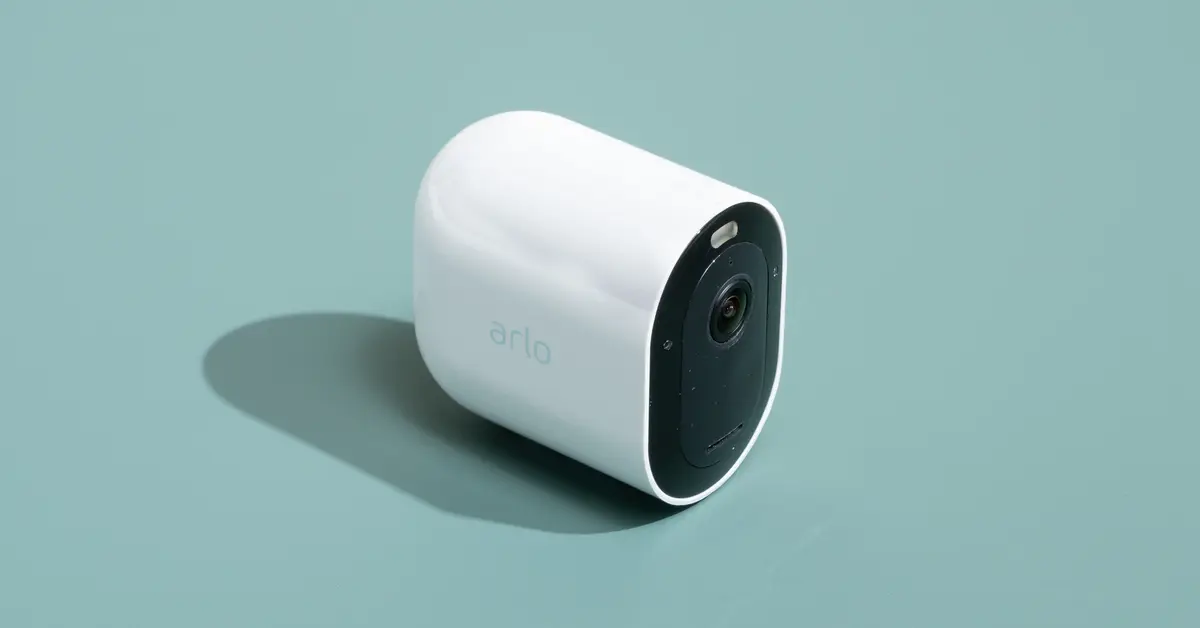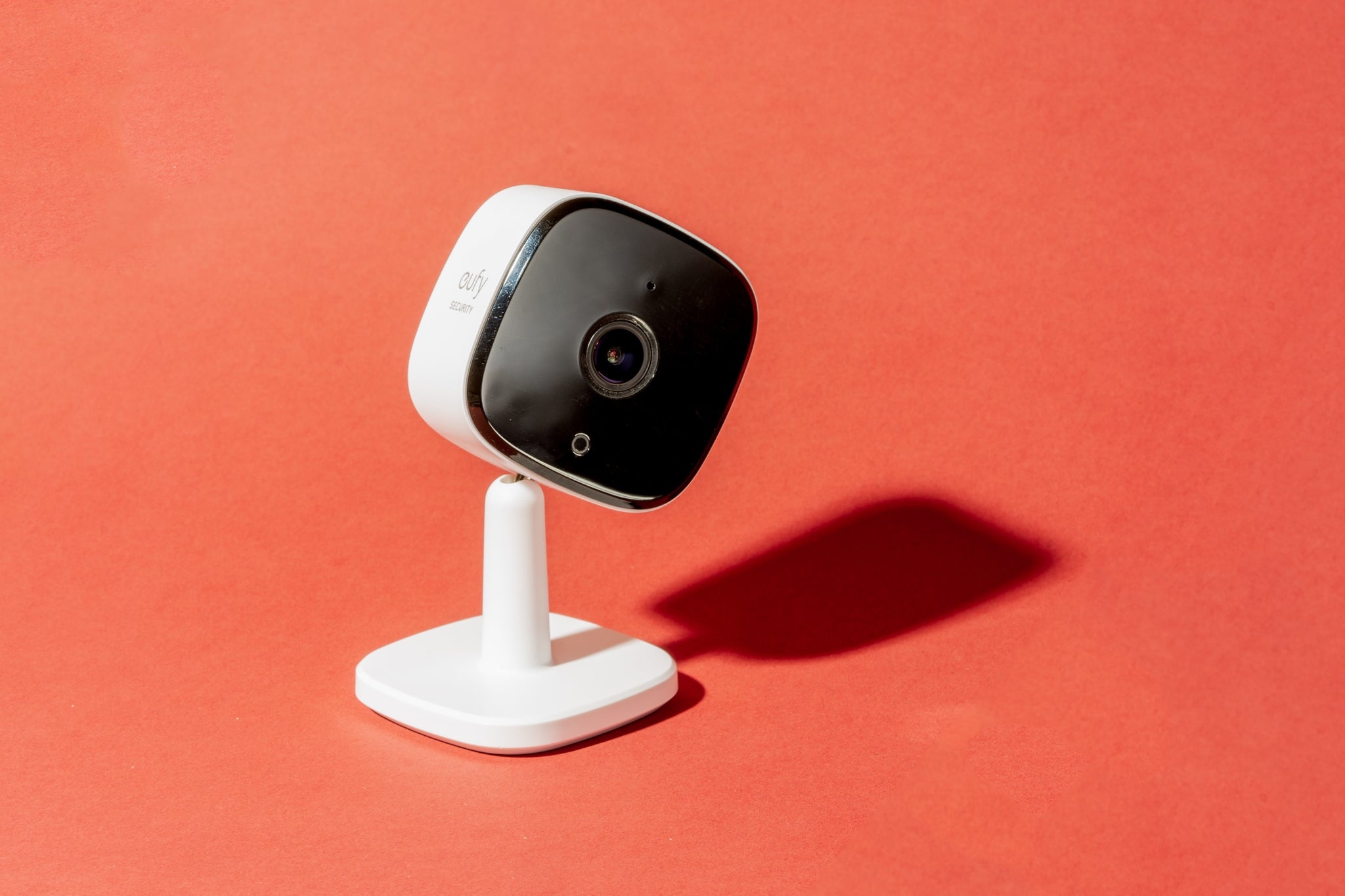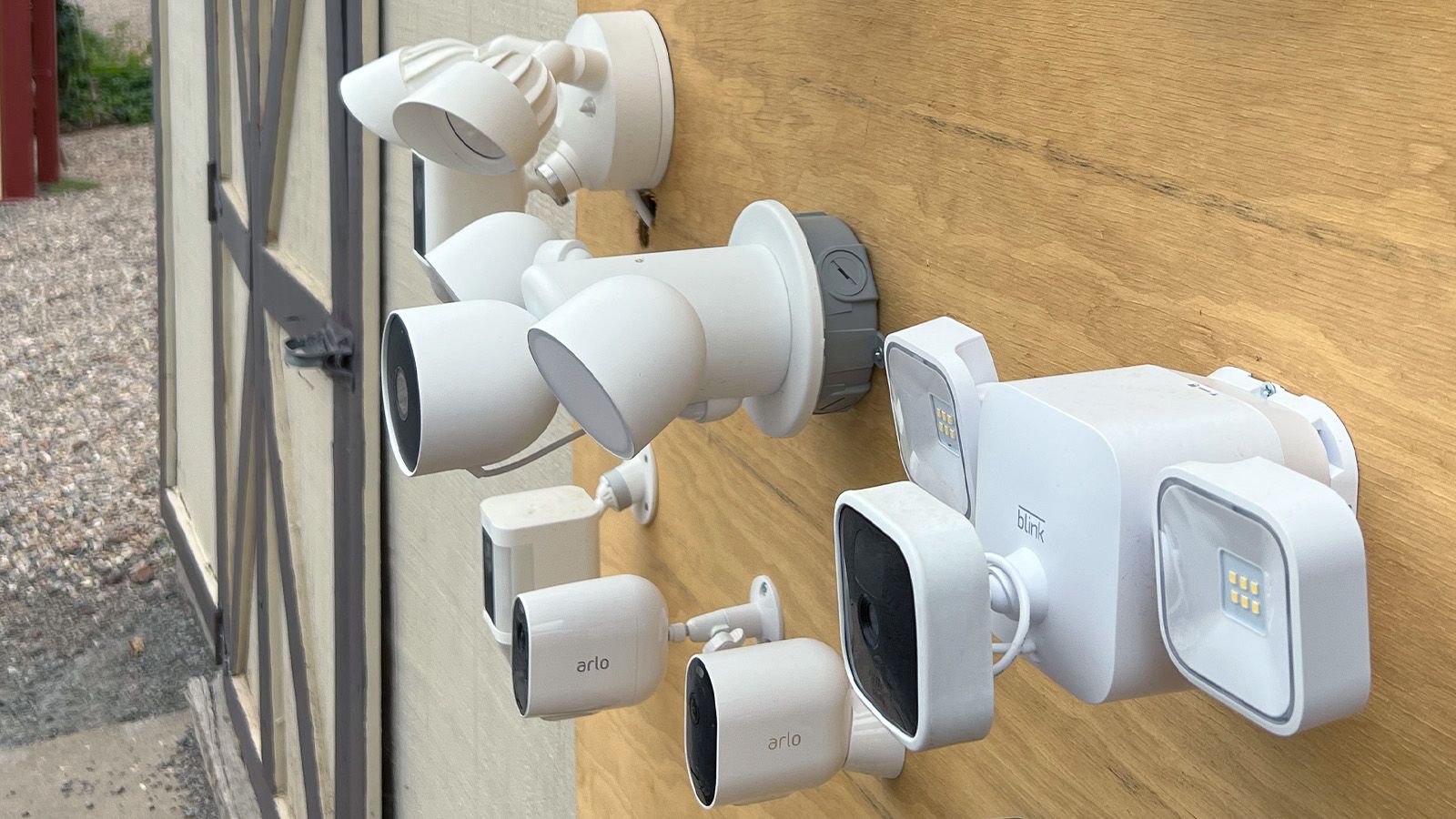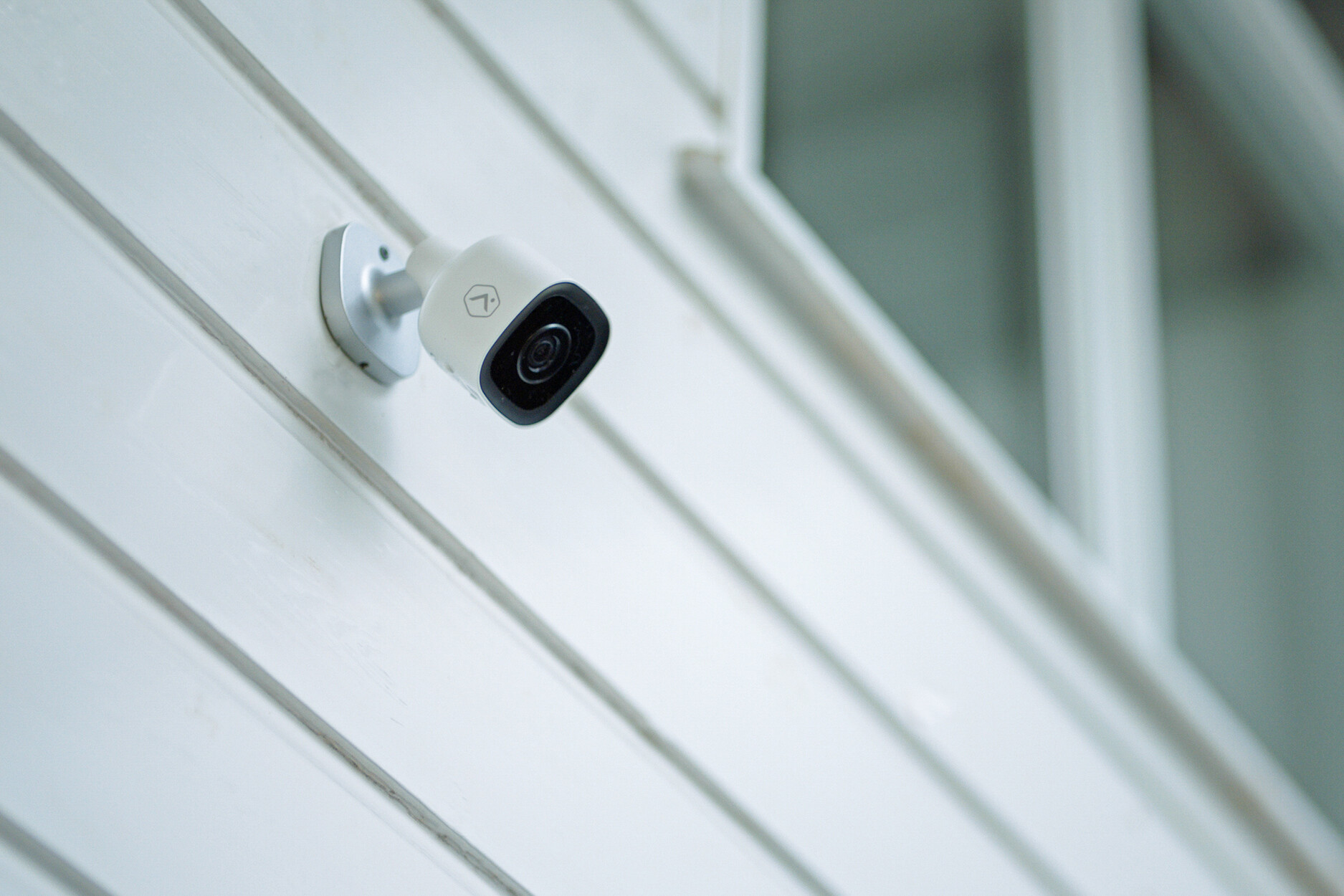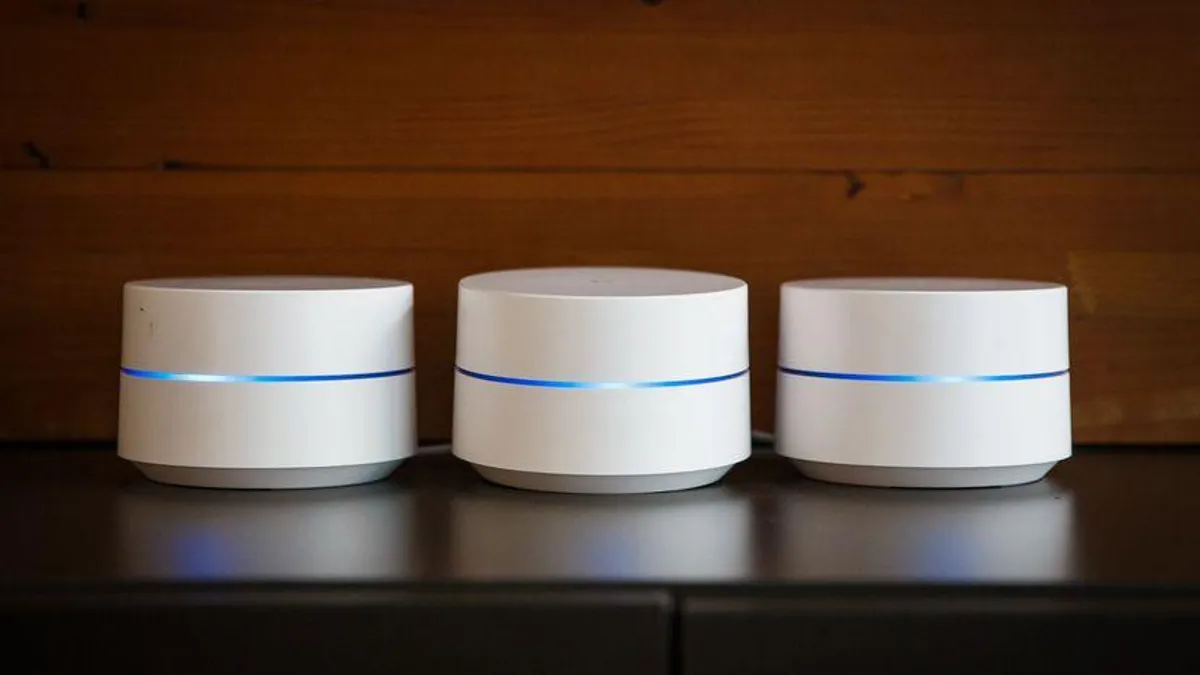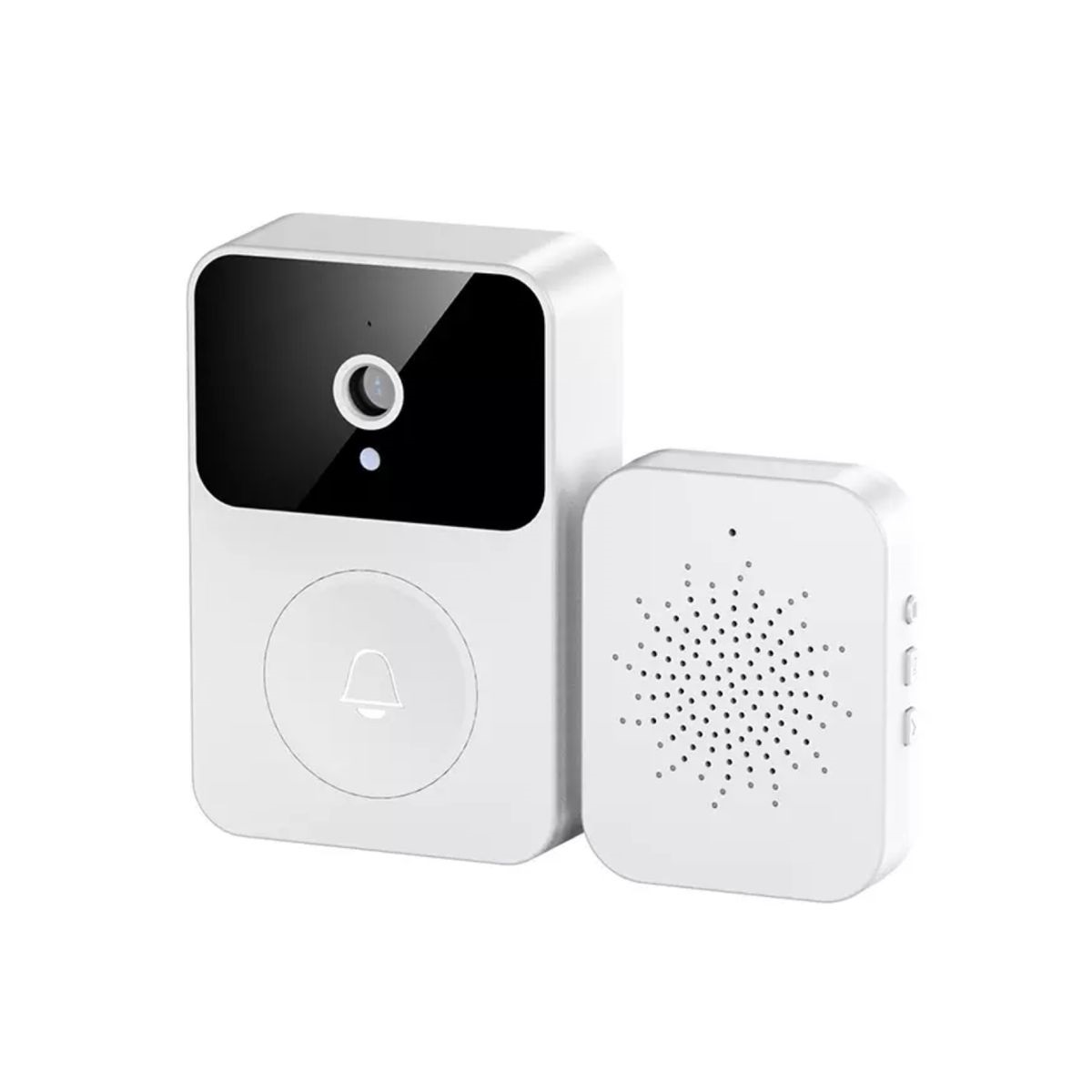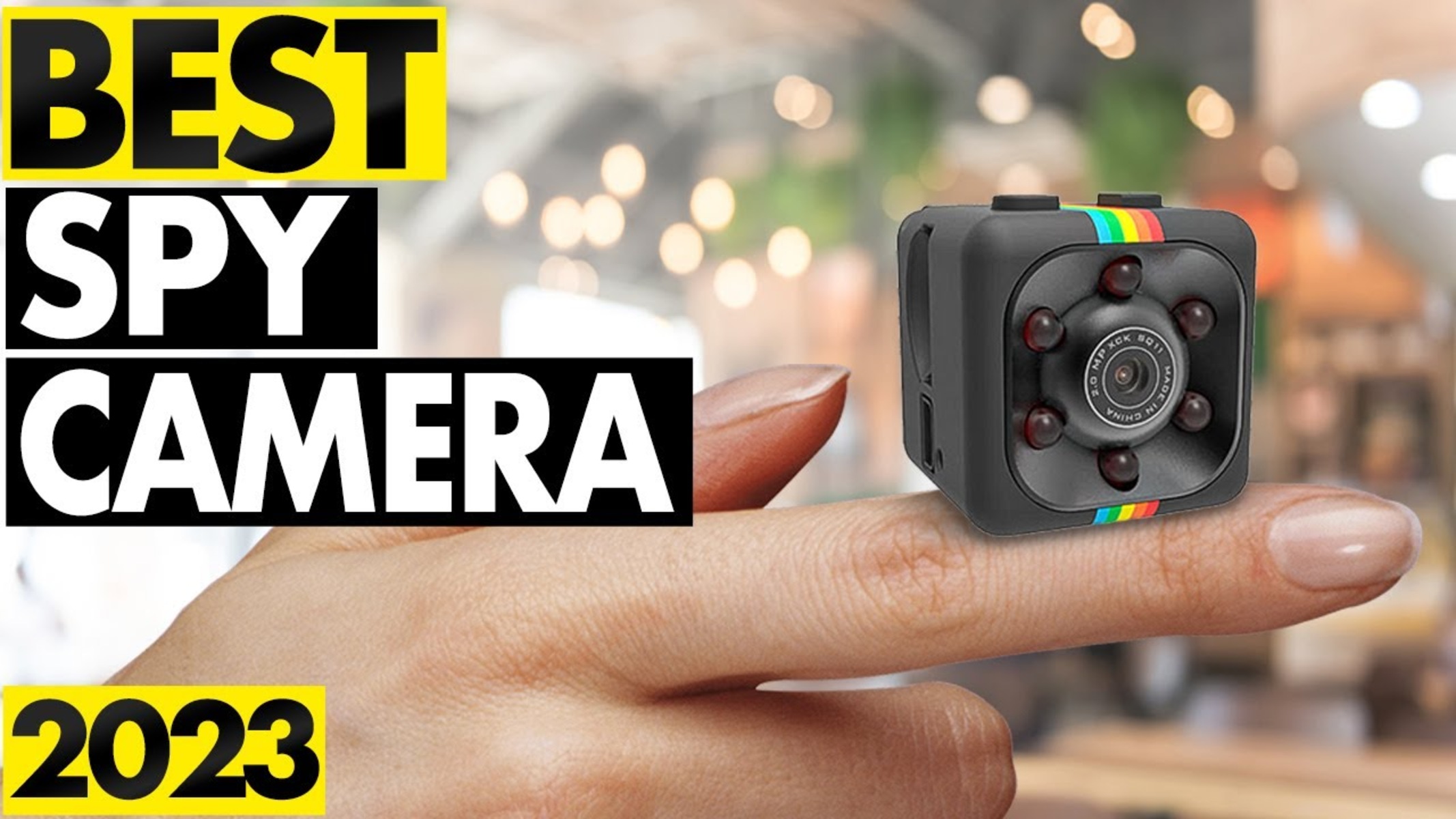Introduction
Welcome to our guide on security cameras that work without Wi-Fi. In today’s digital world, Wi-Fi connectivity has become an essential part of our daily lives. However, there may be situations where you need surveillance cameras in areas without internet access or where connecting to a Wi-Fi network is not feasible. Fortunately, there are several options available for security cameras that can operate efficiently without relying on Wi-Fi.
Whether you’re concerned about securing a remote property, monitoring a construction site, or simply looking for an alternative solution for areas without Wi-Fi coverage, this guide will provide you with valuable insights on security camera options that can meet your needs.
We will explore various types of security cameras that do not require Wi-Fi, including cellular security cameras, PoE (Power over Ethernet) cameras, battery-powered cameras, wired cameras, SD card-based cameras, and CCTV (Closed-Circuit Television) cameras. Each of these options has its own unique advantages and considerations, allowing you to choose the one that best fits your specific requirements.
Additionally, we will discuss the factors that you should consider when selecting a security camera without Wi-Fi. These factors include the camera’s resolution, recording capabilities, power source, storage capacity, and ease of installation.
Whether you need a temporary surveillance solution, a discreet security camera, or a reliable system for long-term monitoring, our guide will help you navigate through the available options and make an informed decision.
So, let’s dive into the world of security cameras that work without Wi-Fi and explore the possibilities of securing your property or premises without the need for internet connectivity.
Security Camera Options without Wi-Fi
When it comes to security cameras that operate without Wi-Fi, there are several options available to choose from. Each option offers unique features and benefits, catering to different requirements and situations. Let’s take a closer look at some of these options:
1. Cellular Security Cameras: These cameras utilize cellular networks for data transmission, allowing you to access live footage and receive alerts remotely. They require a SIM card and a data plan to function effectively.
2. PoE (Power over Ethernet) Security Cameras: These cameras receive both power and data through an Ethernet cable connected to a network video recorder (NVR) or a PoE switch. They offer high-resolution video quality and are suitable for both indoor and outdoor surveillance.
3. Battery-Powered Security Cameras: These cameras are convenient for areas without access to power outlets. They come with built-in rechargeable batteries and can be easily installed anywhere. They typically offer motion detection, night vision, and cloud storage options.
4. Wired Security Cameras: These cameras are connected directly to a recording device using cables. They offer a reliable and stable connection, making them ideal for areas with limited or no Wi-Fi coverage. Wired cameras are commonly used for commercial and industrial surveillance.
5. SD Card-Based Security Cameras: These cameras store recorded footage directly on an SD card, eliminating the need for internet connectivity. They are typically used for personal surveillance in homes or small businesses.
6. CCTV (Closed-Circuit Television) Cameras: CCTV cameras are traditional analog surveillance systems that do not rely on Wi-Fi for operation. They require a wired connection to a DVR (Digital Video Recorder) for recording and monitoring purposes.
Each of these security camera options offers its own set of advantages and considerations. The choice depends on factors such as the location, power source availability, desired features, and budget requirements. Consider your specific needs and constraints before selecting the most suitable option for your surveillance needs.
Cellular Security Cameras
Cellular security cameras provide a reliable surveillance solution for areas without Wi-Fi access. These cameras use cellular networks, such as 3G or 4G/LTE, to transmit data and enable remote access to live footage and alerts.
One of the key advantages of cellular security cameras is their ability to operate independently of Wi-Fi and traditional wired networks. Instead, they rely on a SIM card and a data plan to establish a connection with the cellular network. This makes them suitable for remote locations, construction sites, or areas where setting up a Wi-Fi network is impractical or impossible.
These cameras offer features such as high-definition video quality, motion detection, night vision, and two-way audio communication. Some models even include advanced features like facial recognition and license plate recognition for enhanced security.
When choosing a cellular security camera, it’s essential to consider factors like cellular network coverage in the area, compatibility with different carriers, and data plan requirements. You’ll need to select a camera that supports the same cellular network as your preferred carrier and ensure that you have a data plan that suits your surveillance needs.
Installation of cellular security cameras is relatively simple and straightforward. Many models are designed for outdoor use, with weatherproof and vandal-resistant housing. They can be mounted on walls, ceilings, or posts, depending on the specific requirements of your surveillance area.
Additionally, cellular security cameras often provide remote access through mobile apps or web portals. This allows you to monitor your cameras, receive alerts, and view live or recorded footage from anywhere using your smartphone, tablet, or computer.
It’s worth noting that cellular security cameras do require a stable cellular signal for optimal performance. If the camera’s location has weak or unreliable cellular network coverage, it may affect the video transmission and remote access capabilities. Conducting a signal strength test beforehand can help ensure the camera’s effectiveness in the chosen location.
In summary, cellular security cameras offer a viable solution for areas without Wi-Fi access. With their ability to connect to cellular networks, these cameras provide remote surveillance capabilities, high-quality video, and advanced features, making them suitable for a wide range of surveillance applications.
PoE (Power over Ethernet) Security Cameras
PoE (Power over Ethernet) security cameras are an excellent option for those looking for a reliable surveillance solution without relying on Wi-Fi connectivity. These cameras receive power and data through a single Ethernet cable, making installation and setup a breeze.
One of the main advantages of PoE security cameras is their simplified cabling system. With a PoE switch or a network video recorder (NVR) with PoE ports, you can connect multiple cameras using a single Ethernet cable. This not only reduces cable clutter but also eliminates the need for a separate power source near each camera.
PoE security cameras offer high-definition video quality, allowing for clear and detailed footage. They are available in various resolutions, from standard 1080p to advanced 4K ultra HD, ensuring that you capture the finest details of the monitored area.
These cameras often come equipped with advanced features such as night vision, wide dynamic range (WDR), and pan-tilt-zoom (PTZ) capabilities, enabling comprehensive surveillance coverage even in challenging lighting conditions or wide-angle areas.
Installation of PoE cameras is straightforward. By connecting the camera to a PoE switch or NVR, you can power the camera and transmit data simultaneously over a single Ethernet cable. This simplifies the installation process and reduces the overall cost compared to traditional wired or wireless systems.
Moreover, PoE security cameras can be utilized for both indoor and outdoor surveillance. They are typically designed with weatherproof and vandal-resistant features to withstand various environmental conditions. This makes them suitable for monitoring entryways, perimeters, parking lots, and other areas that require constant surveillance.
If you prefer the convenience of remote access, PoE cameras offer multiple options. Most cameras come with mobile apps or web-based interfaces that allow remote viewing, live streaming, and playback of recorded footage on smartphones, tablets, or computers. Some models even support push notifications and email alerts to keep you informed of any suspicious activity in real-time.
In summary, PoE security cameras provide a reliable and efficient surveillance solution without relying on Wi-Fi connectivity. With their simplified cabling, high-definition video quality, and advanced features, PoE cameras are an excellent choice for both indoor and outdoor surveillance applications.
Battery-Powered Security Cameras
Battery-powered security cameras offer a flexible and convenient solution for locations where access to a power source is limited or unavailable. These cameras operate on rechargeable batteries, allowing you to install them virtually anywhere without the need for wiring or power outlets.
One of the primary advantages of battery-powered security cameras is their portability. Since they are not dependent on a fixed power source, you can easily move and reposition them as needed. This makes them ideal for temporary surveillance needs or situations where flexibility is required, such as construction sites, rental properties, or outdoor events.
With advancements in battery technology, modern battery-powered cameras can provide weeks or even months of standby time and record hours of footage on a single charge. Some models also offer power-saving features, like motion-activated recording or scheduling, to further extend battery life.
Installation of battery-powered security cameras is typically a DIY-friendly process. These cameras often come with mounting brackets or adhesive strips, allowing for easy attachment to walls, ceilings, or other surfaces. No wiring is required, making installation hassle-free and avoiding potential damage to walls or structures.
Battery-powered cameras offer a range of features, including high-definition video resolution, motion detection, night vision, and two-way audio. They may also provide cloud storage options for saving and accessing recorded footage securely.
For remote access and control, battery-powered cameras usually come with dedicated mobile apps or web interfaces. Through these interfaces, you can view live video streams, adjust camera settings, receive motion-triggered alerts, and playback recorded footage from your smartphone, tablet, or computer.
It’s important to consider battery life and recharging options when choosing a battery-powered camera. Some cameras require removing the battery for recharging, while others offer convenient rechargeable battery packs or solar charging capabilities for extended use without interruption.
Keep in mind that extreme weather conditions can affect battery performance and lifespan. If you plan to use battery-powered cameras outdoors, ensure they have appropriate weatherproof and durable construction to withstand harsh environments.
To summarize, battery-powered security cameras provide a flexible and portable surveillance solution in scenarios where access to a power source is limited. With their easy installation, long battery life, and essential features, these cameras offer a convenient option for temporary or versatile surveillance requirements.
Wired Security Cameras
Wired security cameras offer a reliable and stable surveillance solution without relying on Wi-Fi or wireless networks. These cameras are directly connected to a recording device or monitor using cables, ensuring a secure and uninterrupted connection.
One of the main advantages of wired security cameras is their consistent and reliable transmission of video footage. Unlike wireless cameras that can experience signal interference or dropouts, wired cameras maintain a constant connection, providing clear and uninterrupted video surveillance.
Wired cameras are commonly used in commercial and industrial settings, where a high level of security is required. They are suitable for areas with limited or no Wi-Fi coverage, making them an ideal choice for remote locations, warehouses, factories, and large outdoor spaces.
These cameras come with various options, including analog cameras that use coaxial cables and IP (Internet Protocol) cameras that use Ethernet cables. Analog cameras are typically connected to a DVR (Digital Video Recorder), while IP cameras are connected to an NVR (Network Video Recorder).
Wired security cameras offer high-definition video quality, ensuring clear and detailed footage for effective monitoring and identification. They often come equipped with features such as night vision, motion detection, and remote pan-tilt-zoom control, allowing for comprehensive surveillance coverage.
The installation of wired cameras may require professional assistance to run the necessary cables and connect them to the recording device. However, once installed, they provide a robust and low-maintenance surveillance system.
For remote access and monitoring, many wired security camera systems offer mobile apps or web-based interfaces. These interfaces allow you to access live video streams, playback recorded footage, and receive alerts on your smartphone, tablet, or computer.
When choosing wired security cameras, it’s important to consider the wiring infrastructure and the availability of power outlets near the camera locations. Proper planning and cable management can help ensure a clean and organized installation.
Overall, wired security cameras provide a reliable and secure surveillance solution for areas without Wi-Fi coverage. With their stable connection, high-quality video, and comprehensive features, wired cameras are a popular choice for commercial and industrial applications requiring continuous and dependable surveillance.
SD Card-Based Security Cameras
SD card-based security cameras offer a convenient and standalone solution for surveillance without relying on Wi-Fi connectivity or external recording devices. These cameras store recorded footage directly onto an SD card, eliminating the need for internet access or additional storage devices.
One of the key advantages of SD card-based security cameras is their simplicity and ease of use. With no complex setup or network configuration required, these cameras can be up and running quickly. Simply insert an SD card into the camera, and it will start recording video footage automatically.
These cameras are typically used for personal surveillance in homes, small businesses, or areas with limited surveillance needs. They are compact, discreet, and can be easily placed or hidden to capture the desired monitoring area.
SD card-based cameras offer various features, including high-definition video quality, motion detection, and night vision. Additionally, some models may include advanced capabilities such as two-way audio communication or remote viewing via mobile apps or web interfaces.
One of the main considerations with SD card-based cameras is the storage capacity of the SD card. The recording duration depends on the SD card’s storage capacity and the camera’s video resolution settings. It is essential to choose an SD card with sufficient storage to accommodate your surveillance needs.
Another factor to consider is the maintenance of the SD card. As the camera continues to record, the SD card’s storage capacity will fill up over time. It’s important to regularly review and backup the recorded footage or set the camera to overwrite old recordings when the storage is full.
Accessing the recorded footage is simple with SD card-based cameras. You can remove the SD card from the camera and insert it into a computer or SD card reader to view or transfer the recordings. Some cameras also provide remote access or cloud storage options, allowing you to access the footage from anywhere using a mobile app or web interface.
It’s worth noting that SD card-based cameras may have limitations in terms of continuous recording compared to other options. Depending on the camera’s settings and the SD card’s storage capacity, you may need to periodically check and replace or empty the SD card to ensure uninterrupted recording.
In summary, SD card-based security cameras provide a straightforward and standalone surveillance solution without the need for Wi-Fi or external recording devices. With their simplicity, flexibility, and essential features, these cameras are an ideal choice for personal surveillance in homes, small businesses, or areas with limited surveillance requirements.
CCTV (Closed-Circuit Television) Cameras
CCTV (Closed-Circuit Television) cameras are a traditional and reliable option for security surveillance that does not require Wi-Fi connectivity. These cameras operate on a closed circuit, allowing for direct monitoring and recording within a specific area or premises.
One of the main advantages of CCTV cameras is their proven track record of reliability and durability. They have been widely used for surveillance in various settings, including homes, businesses, public spaces, and government facilities.
CCTV cameras utilize coaxial cables to transmit video signals directly to a monitoring device or a dedicated video recorder. Unlike wireless or internet-dependent cameras, CCTV cameras do not rely on Wi-Fi or the internet for operation, making them less susceptible to interference or network disruptions.
These cameras are available in different types, including dome cameras, bullet cameras, and PTZ (pan-tilt-zoom) cameras. They offer features such as high-resolution video quality, night vision capabilities, and the option for manual or automatic control of the camera’s viewing angle and zoom.
Due to the wired nature of CCTV cameras, they provide a secure and private surveillance system. The video transmission is limited to the closed circuit, reducing the risk of unauthorized access or hacking.
CCTV systems typically require professional installation as they involve running cables, setting up monitors or recorders, and configuring the system. However, once installed, they provide a comprehensive and robust surveillance solution.
Monitoring and accessing the recorded footage from CCTV cameras are done through connected monitors or digital video recorders (DVRs). Some advanced CCTV systems also offer remote access capabilities, allowing you to view live or recorded footage from your smartphone or computer via a secure network connection.
As technology has advanced, modern CCTV cameras can now support digital recording formats, offering larger storage capacities and the ability to search, review, and archive footage more efficiently.
It’s important to consider the specific requirements of your surveillance needs when choosing CCTV cameras. Factors such as the desired camera type, image quality, coverage area, and any specialized features should be taken into account.
In summary, CCTV cameras provide a reliable and secure surveillance solution that does not require Wi-Fi connectivity. With their longevity, versatility, and proven effectiveness, CCTV systems continue to be widely used for surveillance in various settings, offering peace of mind and comprehensive security monitoring.
Factors to Consider when Choosing a Security Camera without Wi-Fi
When selecting a security camera that does not require Wi-Fi, there are several key factors to consider. These factors will help you choose a camera that meets your specific surveillance needs and ensures reliable and effective monitoring. Here are the important factors to keep in mind:
1. Resolution: The camera’s resolution determines the quality and clarity of the captured video. Higher resolutions, such as HD or 4K, provide clearer and more detailed footage, which is essential for accurate identification and monitoring.
2. Recording Options: Consider the recording options available with the camera. Look for features like continuous recording, scheduled recording, or motion-triggered recording to ensure that the camera captures and stores footage based on your specific requirements.
3. Power Source: Determine the available power sources in the area where the camera will be installed. Choose a camera with a compatible power source, such as mains power, batteries, or Power over Ethernet (PoE) solutions, depending on the specific needs and limitations of the location.
4. Storage Capacity: Assess the camera’s storage capacity or compatibility with external storage devices. Ensure that the camera can accommodate enough storage for your desired recording duration. Options may include built-in storage, SD cards, or external storage solutions like NVRs or DVRs.
5. Weather Resistance: Consider the camera’s ability to withstand various weather conditions if it will be installed outdoors. Look for cameras with appropriate weatherproof ratings to ensure they can operate effectively in rain, snow, heat, or other challenging environments.
6. Field of View: Evaluate the camera’s field of view (FOV) to ensure it covers the desired monitoring area adequately. Consider the camera’s lens type and focal length to determine the suitable FOV for your specific surveillance requirements.
7. Remote Access: Determine if remote access and monitoring are essential for your needs. Look for cameras that offer remote viewing capabilities through mobile apps or web interfaces, allowing you to access live feeds and recorded footage from anywhere, anytime.
8. Integration and Compatibility: Assess if the camera integrates with other security systems or devices, such as alarms or smart home automation. Compatibility with other technologies can enhance your overall security setup and provide a seamless monitoring experience.
9. Installation and Ease of Use: Consider the installation process and ease of use of the camera. Look for cameras that offer simple installation methods, user-friendly interfaces, clear instructions, and available customer support to ensure a smooth setup and operation.
10. Budget: Finally, determine your budget for the security camera. Compare the features, capabilities, and quality of different cameras within your price range to make an informed decision that fits your needs and financial resources.
By carefully considering these factors, you can select a security camera without Wi-Fi that aligns with your surveillance requirements and provides reliable and effective monitoring for your specific setting or application.
Conclusion
Choosing a security camera that does not rely on Wi-Fi opens up a range of options to suit different surveillance needs. Whether you’re securing a remote location, monitoring a construction site, or seeking an alternative solution for areas without Wi-Fi coverage, there are several camera types to consider.
Cellular security cameras utilize cellular networks, PoE cameras receive power and data through Ethernet cables, battery-powered cameras offer flexible installation, wired cameras provide a stable connection, SD card-based cameras store footage directly on an SD card, and CCTV cameras operate on a closed circuit. Each option has its own advantages and considerations, allowing you to select the most suitable one for your specific requirements.
When choosing a security camera without Wi-Fi, it’s essential to consider factors like resolution, recording options, power source, storage capacity, weather resistance, field of view, remote access capabilities, integration compatibility, installation process, and budget. These factors will ensure that you choose a camera that fits your needs and provides reliable and effective surveillance.
By making an informed decision based on these considerations, you can secure your property or premises without relying on Wi-Fi connectivity. Whether it’s capturing clear footage, accessing live feeds remotely, or ensuring continuous monitoring, the right security camera can provide the peace of mind and protection you desire.
So, explore the various options available, assess your specific surveillance needs, and select the security camera without Wi-Fi that best meets your requirements. With the right camera in place, you can have confidence in your surveillance system and maintain a secure environment.









